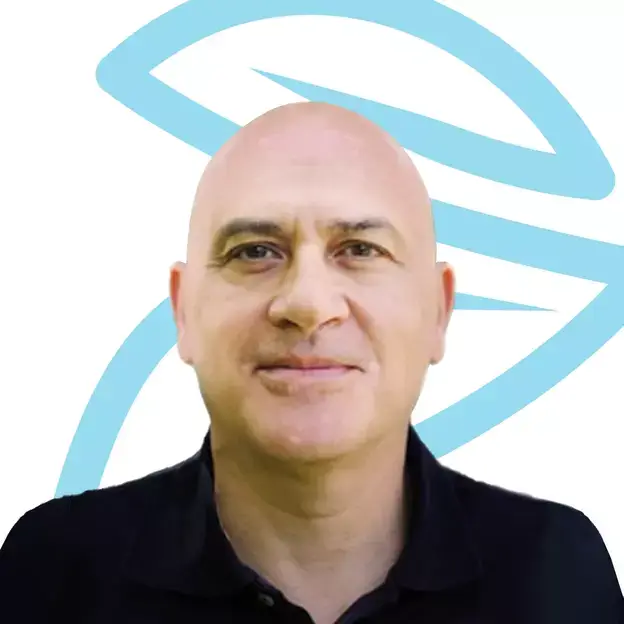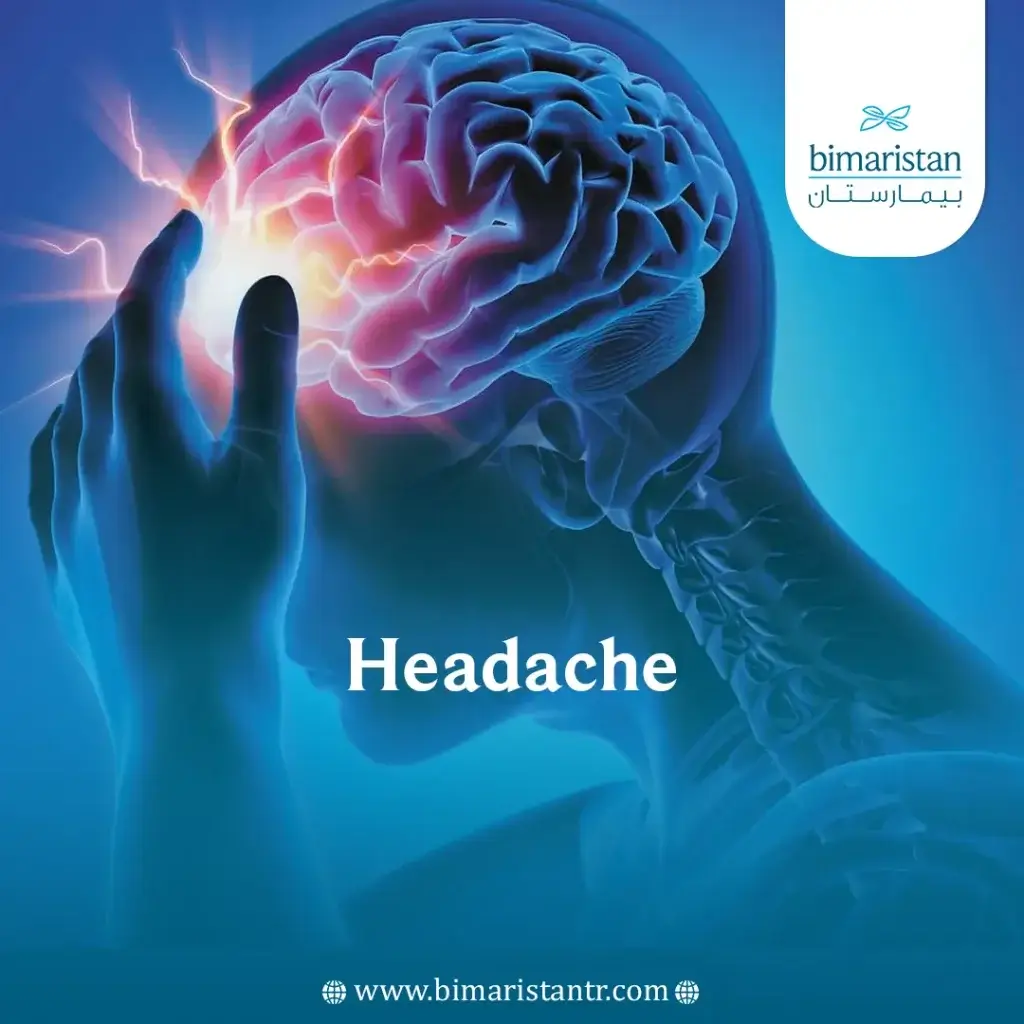Headache is one of the most common ailments experienced by people around the world. According to the World Health Organization, approximately half of the adult population has experienced head pain in recent years, with variations based on age, gender, and location. Head pain can range from mild to severe and can be temporary or chronic.
Head pain can significantly affect daily life, productivity, and overall well-being. Women are more prone to headaches than men, with hormonal fluctuations, stress, and certain physiological factors contributing to this gender disparity. It often results in a reduced quality of life and impedes personal and professional activities. Therefore, understanding the prevalence and impact of headaches is essential for addressing this common health concern.
What is a Headache?
A headache is a pain in any area of the head. It can occur on either one side of the head or both sides, or it may be isolated to a particular location. The pain may spread across the head from a single point, or it can present as a steady sensation causing extreme pressure.
Head pain can manifest as a sharp pain, a throbbing sensation, or a dull ache. It may develop gradually or suddenly and last from less than an hour to several days.
Types of Headaches
There are more than 150 types of headaches, and they are broadly categorized into two main groups: primary and secondary.
Primary Headaches
Primary headaches are caused by dysfunction or overactivity of pain-sensitive features in the head. In these cases, the pain is not due to an underlying medical condition. Genetic factors may make some individuals more susceptible to this type of headache.
The types of primary headaches include:
- Tension headaches (the most common type)
- Migraine
- Cluster headaches
- New daily persistent headache (NDPH)
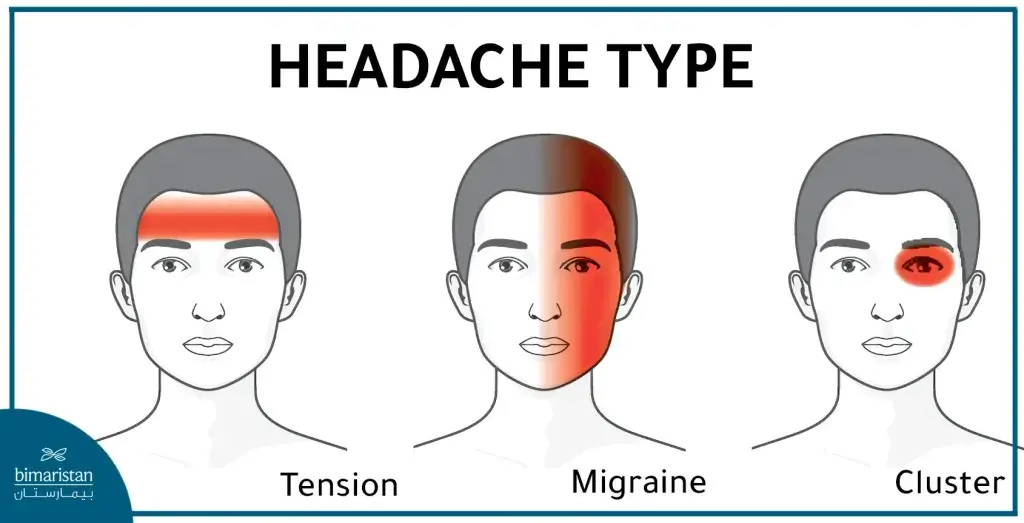
These types can be caused by lifestyle factors, including:
- Alcohol, especially red wine
- Some foods, such as processed meats, contain nitrates
- Nicotine consumption
- Sleep changes or lack of sleep
- Physical activity, such as exercising
- Change in eating habits or delaying meals
- Coughing, sneezing, straining (such as when having a bowel movement), laughing or crying hard
It is usually not serious, but it can be very painful and affect daily life.
Secondary headache
There is an underlying medical condition that causes this type, meaning head pain is a symptom or sign of a disease. The causing condition does not have to be serious, and it is possible for the head pain to go away once the underlying condition is treated.
It includes several types that result from:
- Drought
- Sinusitis
- Excessive use of head pain medications
There are some types that can be a sign of a serious or potentially life-threatening condition:
Spinal headache
It is a severe head pain that occurs when spinal fluid leaks from the membrane (dura mater) surrounding the spinal cord, usually after a spinal tap. Most of these cases can be treated at home, but if they are prolonged and untreated, they can cause life-threatening complications, such as a subdural hematoma.
Thunderclap headache
It is an extremely painful head pain that comes on suddenly, like a shock of thunder. This type reaches its most severe pain within one minute and lasts for at least five minutes. While a thunderclap head pain may sometimes be not serious, it is important to seek immediate medical attention, as it can be a sign of:
- Head injury
- Internal bleeding in the head
- Reversible cerebral vasoconstriction syndrome
- Sudden and severe rise in blood pressure
Cause of headaches
Anything that stimulates pain receptors in the head or neck can cause head pains, including:
- Stress and muscle tension
- Diet and dehydration
- Eye problems and noise
- Hormonal influences and medications
- Disorders of the ear, nose, throat, teeth and jaw
- Nervous system disorders (Parkinson’s disease)
- Injury to the head, neck, or spine
- hypertension
- Abuse of alcohol or drugs
- Very high or low temperature
- Temporal arteritis, which is more common in older people
- Arthritis and meningitis
Tension headache
It is the most common type, causing mild to moderate pain, which is often described as feeling like a band of pressure around the head. However, its causes are not well understood.
It is divided into two main categories: episodic and chronic.
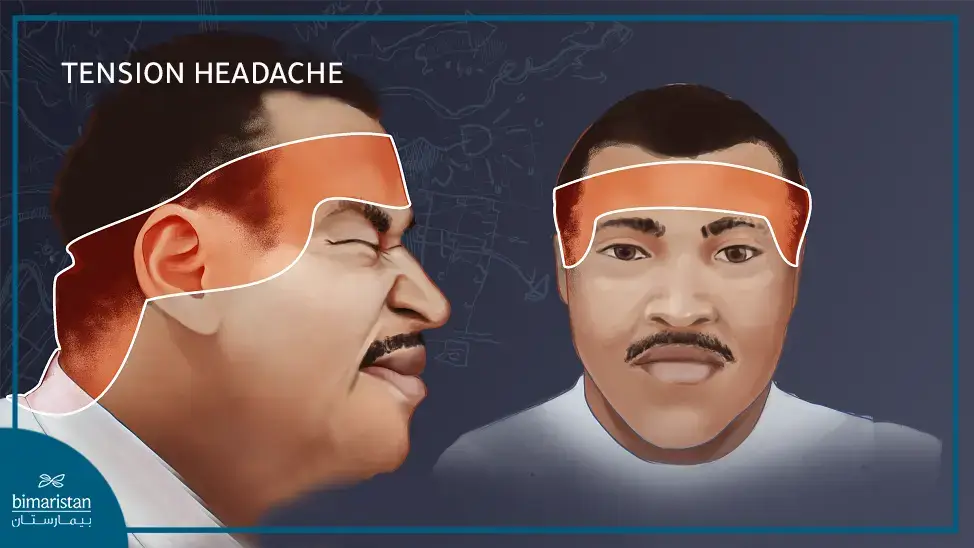
Episodic Headache
This type of head pain can last from 30 minutes to a week and occurs frequently for less than 15 days a month for at least three months. It can become chronic.
Chronic Headache (Persistent Headache)
This type lasts for hours and can be continuous, occurring for 15 days or more a month for at least three months.
Symptoms of Tension Headache
- Dull pain in the head
- A feeling of tightness or pressure on the forehead or sides and back of the head
- Pain in the scalp, neck, and shoulder muscles
Migraine
A migraine is a disorder that causes severe, throbbing pain deep inside the head. Migraine attacks can last between 4 to 72 hours without treatment, significantly limiting the ability to carry out daily routines.
Migraines may be hereditary or associated with other nervous system conditions. According to the National Institute of Neurological Disorders and Stroke (NINDS), females are three times more likely to experience migraines compared to males. Individuals with post-traumatic stress disorder (PTSD) also have an increased risk.
Migraine symptoms
- Throbbing pain in the head, usually on one side
- Sensitivity to light
- Sensitivity to sound
- Nausea and vomiting
About one-third of migraine sufferers experience visual disturbances known as aura, which may include seeing bright lights and having blind spots. The aura can also involve tingling on one side of the face or in one arm and difficulty speaking.
Tension Headache vs. Migraine
If you frequently experience episodic tension headaches, you may also suffer from migraines. However, unlike some forms of migraine, tension-type typically does not involve visual disturbances such as seeing bright spots or flashes of light. Those with tension-type usually do not experience nausea or vomiting. While physical activity can exacerbate migraine pain, it does not affect tension-type pain, which is sometimes sensitive to light or sound, although this is uncommon.
Cluster headaches
Cluster headaches are a rare type of head pain characterized by severe and recurring pain on one side of the head.
The exact cause of cluster type is not well understood, but several factors may contribute to the development and exacerbation of symptoms, including hormonal changes, smoking, alcohol consumption, and certain medications.
Symptoms of Cluster Headache
- Intense, sudden head pain lasting from ten minutes to two hours, usually around the eye or forehead on one side, often occurring at night and waking the patient from sleep
- Symptoms of Horner’s syndrome on the affected side (pupil constriction, drooping eyelid, and lack of sweating)
- Redness and swelling of the eye with increased tearing
- Nasal congestion or blockage
- Swelling or redness of the face
Sinus Headache
Sinus type results from an infection in the sinuses (sinusitis) and often occurs after a viral upper respiratory infection or a cold.
Symptoms of Sinus Headache
- Pain, pressure, and fullness in the cheeks, brow, or forehead
- Worsening pain when bending forward or lying down
- Nasal congestion and reduced sense of smell
- Fatigue
- Pain in the upper teeth
Headache Treatment
Different types of head pains require various treatments to be effective. Although some symptoms may be similar, the same treatment may not work for everyone. Therefore, the physician must thoroughly understand the patient’s complaints to provide the most effective treatment option.
Natural remedies for headaches
- Staying hydrated
- Regularly massaging the scalp
- Using warm or cold compresses
- Acupuncture
- Breathing exercises
- Ensuring 6-8 hours of sleep daily
Migraine treatments
Effective treatments include:
- Resting in a quiet, dark room
- Using hot or cold compresses and massage
- Tricyclic antidepressants
- Transcranial magnetic stimulation, which uses electrical currents to stimulate nerve cells in the brain
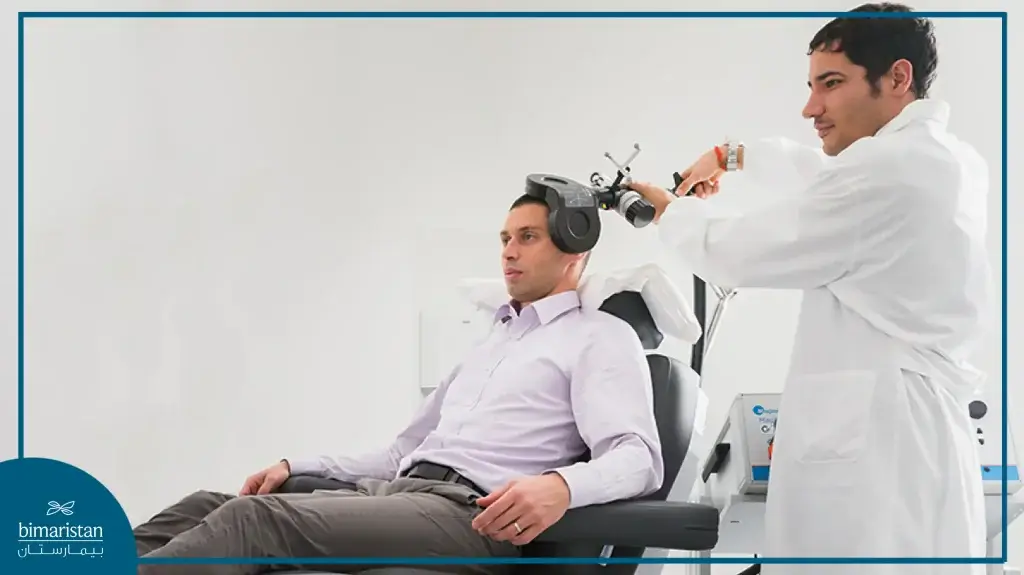
Medications for migraine headaches
Medications used to relieve the pain of migraines work best when taken at the first sign of a migraine, once symptoms begin. Medications that can be used to treat it include:
- Pain relievers: Over-the-counter and prescription pain relievers include aspirin or ibuprofen (Advil, Motrin IB, others).
- Medications that combine caffeine with aspirin and acetaminophen are helpful but usually only useful against mild pain.
- Triptans: Prescription medications such as sumatriptan (Imitrex, Tosemra) and rizatriptan (Maxalt, Maxalt-MLT) are used.
- Dihydroergotamine (Migranal, Trudesa). This medication is available as a nasal spray or injection. It is most effective when taken soon after symptoms start and tends to last longer than 24 hours.
- Lasmiditan (Revo): Lasmiditan resulted in significant improvement in head pain. Lasmiditan can have a sedative effect and cause dizziness, so people taking it are advised not to drive or operate machinery for at least eight hours.
- Opioid medications: For people who can’t take other migraine medications, narcotic opioid medications may help. Because they can be highly addictive, they’re usually only used when other treatments aren’t effective.
- Anti-nausea medications: These medications help if migraine with aura is accompanied by nausea and vomiting. They include chlorpromazine, metoclopramide (Gimoti, Reglan), or prochlorperazine (Compro, Compazine), which are usually taken with pain medications.
Some of these medications are not safe to take during pregnancy, so pregnant women should consult their doctor before taking any medications.
Bimaristan Medical Center also provides permanent migraine treatment through surgery. Don’t hesitate to schedule a free consultation.
Sinus headache treatment
Treatment involves removing the cause of the infection, and viral infections usually disappear without treatment.
Some medications are used to relieve head pains caused by sinusitis, such as:
- Antihistamines to prevent allergy symptoms
- Decongestants to reduce swelling in the nose and sinuses
- pain killers
- Steroids to reduce inflammation
Head pains affect millions of people worldwide with varying degrees of severity and duration. Despite the differences between the various types and their symptoms, increasing awareness, adopting healthy habits, and seeking appropriate medical care are essential to mitigate the effects on quality of life. Do not hesitate to request a free consultation from Bimaristan Center and visit us in Turkey. We will help you choose the optimal treatment method that suits your health condition. n.
Sources:
